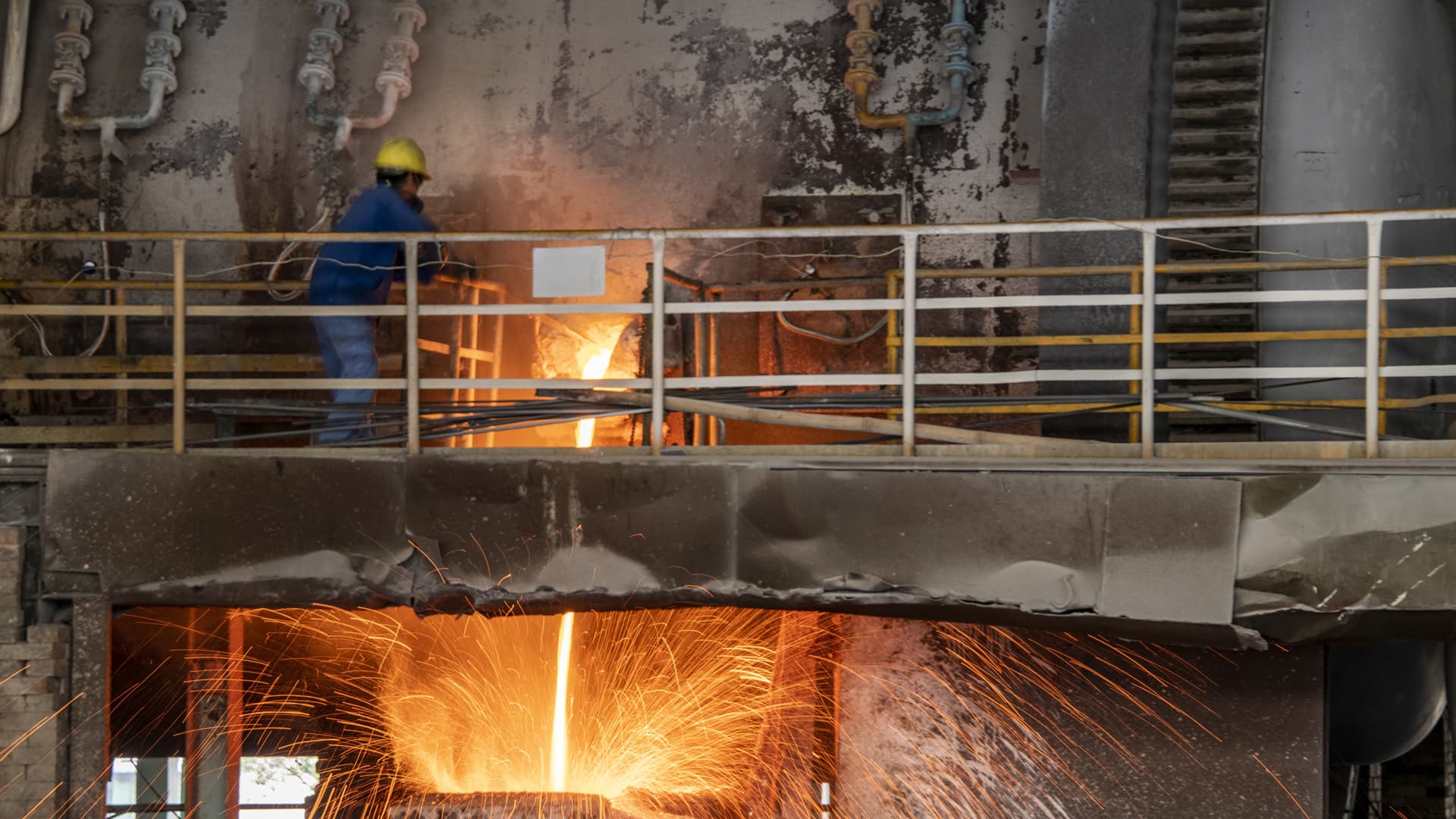This is one metal investors can consider buying on dip ‘at any chance’ they get, according to an analyst

Molten copper flows into molds at a smelting plant in Wuzhou Jinsheng Copper on January 19, 2022 in Wuzhou, Guangxi Zhuang Autonomous Region in China.
He Huawen | Visual China Group | Getty Images
Investors should buy copper on dip when an opportunity arises, according to Jonathan Barratt, CEO of weather insurer CelsiusPro.
“Our outlook for 2023 and 2024 is: when you get a dip in copper prices, it’s something to have in your portfolio,” Barratt told CNBC, citing insufficient supplies and high copper demand in the renewables space.
Copper is a key component in electricity-related technologies, and by extension, a linchpin in energy transition projects.
“There is just not enough supply. And when we look at everything that’s happening in the environmental space, the renewables, everything, copper is a key component. So that’s a buy on dip at any chance you get.”
The world is currently facing a global copper shortage, driven by higher demand pressures and challenged supply streams in South America.
According to the International Energy Agency, sales of electric cars in 2021 more than doubled to bring the total number of EVs globally to around 16.5 million. That means the EV-charging ecosystem will need to be ramped up.
Copper futures last traded at $4.14 per pound, up about 8.34% year-to-date.
Iron ore prices set to fall
As for iron ore, Barratt forecasts that the metal is poised to trade at $115 to $110 per ton, which is about 9% lower than what they are currently at, citing regulatory crackdown in China.
The benchmark 62%-grade iron ore last traded at $126.80 per ton.
“I think the key moment that we’re focusing on is what the Chinese regulatory authorities are doing at the ports in terms of price regulation … and the fact that they really don’t want to see too much [iron ore] inventory at the ports,” he said. Barratt added that it could result in a drop from 160 million tons of iron ore inventory down to 120 million tons.
In a recent response to rising iron ore prices in China, the National Development and Reform Commission (NDRC) said regulations and crackdown on illegal activities will be implemented to strengthen the supervision of iron ore market prices.
“As a result of that, we can see a significant fall back in that inventory build in Chinese ports … that’s going to sort of put a flavor of less demand into the equation,” said Barratt.
Workers tending to steel furnaces in the ArcelorMittal metals plant in Kryvyi Rih, Ukraine, on Wednesday, March 6, 2019.
Vincent Mundy | Bloomberg | Getty Images
Falling prices for global crude steel output could also contribute to lower iron ore prices.
“Steel production is the main demand driver for iron ore and coking coal,” Vivek Dhar, director of Commonwealth Bank of Australia’s Mining and Energy Commodities Research team, said in a daily note.
“Global crude steel output fell modestly in year-on-year terms last month … The result was driven by a fall in steel output amongst most of the world’s largest steel producers.”
World crude steel output recorded a 3.3% drop in January compared to the same period last year, according to the World Steel Association.









